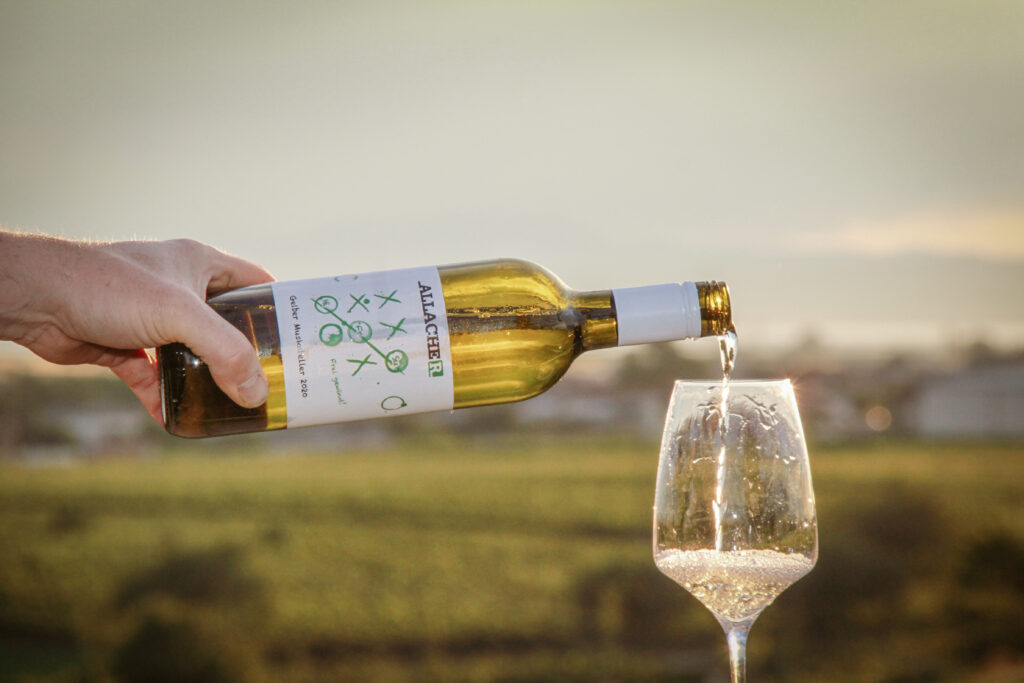Low sulphur wine?
Another important step for us
To the point:
„Low-sulphite“ or “low-sulphur” is the term we use to describe wines which contain about half of the permitted maximum sulphur content.
Examples from our current range of wines:
| Permitted conventional | Allacher wines | |
|---|---|---|
| Grüner Veltliner 2020 | 200 mg/l | 91 mg/l |
| Rosé St. Laurent 2020 | 250 mg/l | 103 mg/l |
| Zweigelt Classic 2019 | 150 mg/l | 42 mg/l |
* The values may vary depending on the year.
"Wines with less sulphite are the logical consequence of our search for the optimum of digestibility.“
Winemaker Rainer Allacher
General information on sulphite
Sulphite, also known as Sulphur, is an important component in winemaking, as it is responsible for the shelf life and the storability of the wine. Sulphite is probably the most effective and oldest known wine preservative and its use is still justified today. It is therefore difficult to do without any sulphite at all.
On the other hand, the demand for wines with less sulphite keeps rising. Since sulphite does have an effect on the digestibility, we started experimenting with low-sulphite wine. (It has to be said that there is no sulphite-free wine, as sulphite is produced during alcoholic fermentation. So, there is only wine without added sulphite.)


Tasting and conclusions
In 2012 we tasted many different low-sulphite wines from Austria, Germany, Italy and overseas. The result of the tasting was sobering. Only one of these wines could convince us somewhat. Unfortunately, the majority of these wines did not meet our taste at all.
So, we decided to abandon the project “sulphite-free wine”.
"Sulphite-free wine?"
Organic wineries do have different legal limits than conventional wineries, which is why we have always been using sulphur very carefully. It is precisely this experience and thoughtfulness that helped us in our attempts to produce our wines with less sulphite. The most important credo in our experiments was to maintain or increase the quality.
How does it work?
The need of sulphite in the wine depends on several factors: Variety, bound oxygen in the wine, oxygen consumption, hygiene, ripeness of the grapes, tannins or phenols, the movement like the pumping of the wine – to name just a few factors. As you can see, there are many different factors that determine how much sulphite is needed for a wine.
Over the years we have optimized and adapted our production process to produce wines with less sulphur. The majority of our wines can now be called low-sulphite wines.
All low-sulphite wines are marked as such in our shop.









